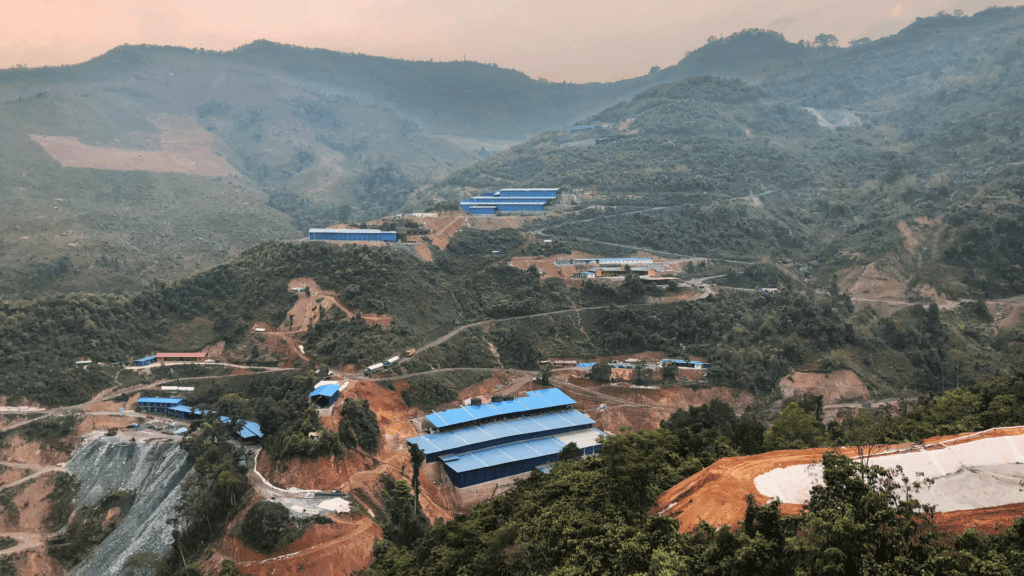Column: Tin bulls in retreat as Myanmar flags return of key mine

The Wa State, a semi-autonomous region of Myanmar, has finally broken its year-long silence on the fate of the Man Maw tin mine.
The mine is the jewel in Myanmar’s tin crown and its suspension since August 2023, ostensibly for an audit, has reduced the flow of tin raw materials to Chinese smelters, constraining output of refined metal.
The Wa authorities have now said they are ready to accept applications for mining and processing licences at Man Maw, flagging its likely return later this year.
The news, officially confirmed by the International Tin Association (ITA), has wrong-footed tin bulls and sent the London Metal Exchange (LME) tin price tumbling.
Man Maw returns
Myanmar is the world’s third largest source of mined tin after China and Indonesia and Man Maw, until its suspension, was by some margin the country’s largest producing tin asset.
The Wa State, which controls Myanmar’s tin sector, has no smelters so everything that is mined is shipped over the border to feed smelters in China’s Yunnan province.
Raw material shipments were little changed in the months immediately after the suspension of operations as above-ground stocks at Man Maw were processed.
But China’s imports from Myanmar have slowed significantly over the last nine months, falling to 21,500 metric tons in the second half of 2024 from 54,900 tons in the first half of the year and 94,600 tons in the year-earlier period.
While some smaller tin mines have re-opened, they are clearly nowhere near as significant a supplier as Man Maw.
Chinese producers have tried to compensate by lifting imports from other countries such as the Democratic Republic of Congo, Australia and Bolivia.
But total imports of tin raw materials were still down by 36% year-on-year in 2024 and at 156,700 tons were the lowest since 2020.
The lack of raw material has pressured smelter operating margins and acted as a major constraint on China’s refined metal production.

Bulls wrong-footed
News of Man Maw’s return has unsurprisingly caused a sell-off in the London tin market.
LME three-month metal surged to a four-month high of $33,790 per ton on February 21, at which stage tin was the best performer among the LME base metals with year-to-date gains of 15.8%.
Funds had been steadily lifting their bull bets on still higher prices. Long positioning reached a record high of 5,172 contracts, equivalent to almost 26,000 tons, at the end of last week.
The ITA’s confirmation that Man Maw will return saw the price tumble to $31,050 at the end of last week, although it has this week bounced back as far as $32,145 per ton.
The partial price recovery is not illogical given it may be several months before the mine actually starts generating tin again.
Structural supply risk
The announcement by the Wa State it is ready to grant licences is only the very first step on the way to a full re-opening.
As the ITA notes, even once licenses are granted, it will take a couple of months at least for workers, mainly from China, to get work permits and move back to Myanmar.
It is also likely the mine will have to be de-watered after such a long suspension, meaning that shipments to China will realistically only start to build momentum in the second half of the year.
Chinese smelters will continue to struggle with low raw materials availability and refined metal production will continue to be affected until the flow of raw materials recovers to pre-suspension levels.
In the interim, the tin market has other supply concerns in the form of the M23 rebel advances in the east of Congo.
The country’s Bisie mine, which last year produced 17,324 tons of contained tin in concentrates, has so far been unaffected.
It is located some 200 kilometres west of the area now under insurgent control but owner Alphamin Resources Corp has warned that the risk profile at Bisie has increased.
This underlines tin’s structural supply problems. A market that is touted as a big beneficiary of both the energy transition and the internet of things is still beholden to a very limited number of global suppliers.
The return of Man Maw doesn’t change that structural supply risk.
(The opinions expressed here are those of the author, Andy Home, a columnist for Reuters.)
(Editing by David Evans)
More News
Infographic: Rare earth spheres of control
Who controls the future of rare earth mining?
May 30, 2025 | 11:28 am
{{ commodity.name }}
{{ post.title }}
{{ post.date }}


Comments